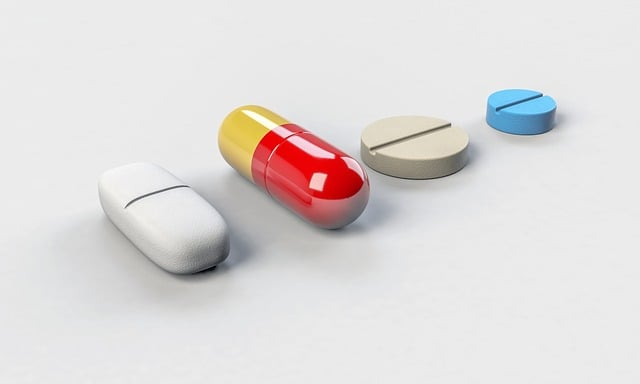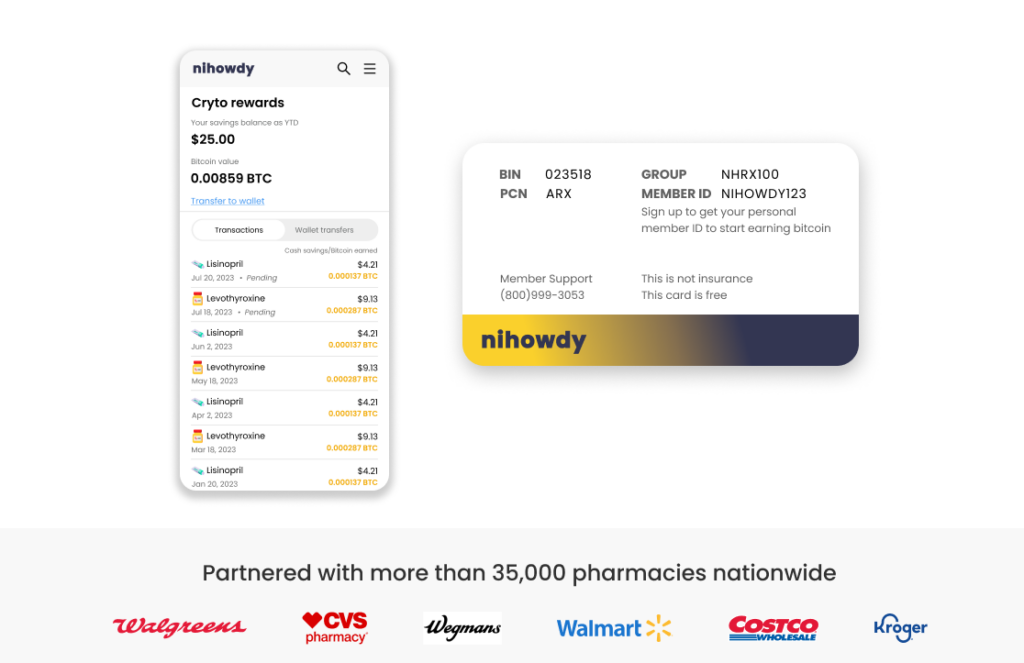Zyrtec vs Claritin: Find Your Allergy Relief


If you’re starting on sertraline or planning to, you likely have one burning question. How long does it take for sertraline to work? The short answer is that you may notice improvements in your symptoms within a few weeks, but it typically takes 4-6 weeks to feel the full benefits. However, everyone’s body reacts differently so that this timeline can vary. In this article, we’ll explore the factors that affect Sertraline’s onset of action, what you might expect during the initial weeks, and how to gauge its effectiveness over time.
Key Takeaways
Sertraline, an SSRI, increases the amount of serotonin available in the brain and can enhance mood, sleep, and appetite. Full effects are usually seen in 4-6 weeks.
The proper dosage of Sertraline is tailored to individuals and may require adjustments. Initial doses are kept low to minimize side effects and gradually increased as needed.
If Sertraline isn’t practical, alternatives include other antidepressants or combining medication with therapy and lifestyle changes; plus, Nihowdy’s prescription discount card can reduce treatment costs.
The Science Behind Sertraline

Exploring the complexities of mental health, Sertraline emerges as a pivotal selective serotonin reuptake inhibitor (SSRI), a drug category critical in managing depression and anxiety symptoms. Consider serotonin as the brain’s signal-bearer affecting mood and emotional states. By preventing its uptake back into nerve cells, Sertraline ensures an abundance of this crucial neurotransmitter stays within the synaptic space. The resultant elevation in serotonin levels is instrumental to alleviating depressive tendencies and quelling symptoms associated with anxiety, providing significant relief for individuals contending with these mental health challenges.
Selective Serotonin Reuptake Inhibitors
Selective serotonin reuptake inhibitors like sertraline serve as custodians, restricting the reabsorption of serotonin. By doing so, they extend the duration for which this essential neurotransmitter can influence nerve cells, improving communication and moderating emotional fluctuations. The outcome is a more serene and balanced mental state with diminished levels of stress and anxiety.
Consequently, SSRIs are frequently prescribed to address numerous mental health conditions—including major depressive disorder, obsessive-compulsive disorder, post-traumatic stress disorder, and premenstrual dysphoric disorder—as well as various forms of anxiety disorders that can profoundly affect an individual’s well-being.
Serotonin’s Role in Mental Health
Serotonin plays a multifaceted role in the complex domain of mental health, not just limited to improving mood. Sertraline enhances serotonin transmission, leading to better sleep, increased energy, and appetite control—all essential for physical and psychological well-being. This is especially significant for those suffering from mental health conditions who commonly experience disturbed sleep, inconsistent energy levels, and alterations in eating habits that compound their challenges.
The comprehensive approach of Sertraline in treating depression by tackling these various aspects makes it an indispensable tool in managing both depression and anxiety effectively.
How Long Does Sertraline Take to Work?

Initiating therapy with Sertraline often raises the question: How long until I see improvement? The answer requires patience since it usually takes about 4 to 6 weeks for Sertraline’s full benefits to manifest. Yet, some individuals may notice early indications such as improved sleep quality, a surge in energy levels, or stabilized eating habits within a few weeks.
Consider this process akin to sowing seeds of wellness. Given time and favorable circumstances, these seeds will blossom into sharper cognition, elevated drive and ambition, and an uplifted emotional state.
Factors Affecting Sertraline Response Time
Numerous factors affect the speed at which Sertraline begins to work. The specific characteristics of an individual’s body, including age, weight, and how well their organs function, can markedly impact the onset time of Sertraline’s effects. If a person takes other medications or has existing medical conditions, these could modify how quickly the medication acts.
The magnitude of symptoms being addressed and the strength of prescription medication dosage are key elements shaping when one might start feeling better after beginning Sertraline. These aspects collectively determine when relief from symptoms may be felt.
Initial Effects vs. Full Benefits
It should be acknowledged that when the initial symptoms begin to subside, this doesn’t imply that Sertraline has achieved its maximum effect. Attaining mental health is more akin to a marathon than a quick dash. Patients are recommended to maintain their treatment regimen with the medication over several months to assess its benefits fully.
Persisting with the treatment is vital, as it enables the full therapeutic effects of Sertraline to take hold and promote sustained enhancements in mental well-being.
Sertraline Dosage Considerations
Just as a tailor finely tunes a suit to fit impeccably, the Sertraline dosage must be tailored to meet each individual’s unique needs. The prescribed quantity of this medication can significantly differ, depending on the particular mental health issue at hand. Obsessive-compulsive disorder or posttraumatic stress disorder treatments, for example, might necessitate up to 12 weeks of uninterrupted therapy before their complete benefits manifest.
Variables like age-related changes, weight gain, and organ performance are instrumental in determining the duration of an individual’s perception of Sertraline’s therapeutic outcomes.
Starting Treatment
Initially, treatment starts with a deliberately low Zoloft dosage. The suggested dosages stand at:
50 milligrams daily for adults experiencing depression
50 milligrams each day for both adults and teenagers coping with obsessive-compulsive disorder
For children between the ages of 6 to 12 years: a daily intake of 25 milligrams
Adopting this methodical strategy permits incrementally raising the dosage by an individual’s reaction to the medication while under strict supervision by a healthcare provider.
Monitoring Progress and Adjusting Dosage
Medication management is an ongoing process that involves regular assessment and modification. For individuals undergoing long-term treatment with sertraline, frequent evaluations are critical to confirm compliance with the treatment plan and determine if changes in dosage are needed.
In overseeing the administration of sertraline, healthcare practitioners consider both polypharmacy—the concurrent use of multiple medications—and particular mental health conditions to make educated decisions regarding the advancement of treatment.
Potential Side Effects of Sertraline
It’s important to recognize that while Sertraline (Zoloft) can be helpful for many, it is also essential to be aware of the possible side effects one might experience during its use. Frequently observed side effects include nausea, headaches, insomnia, drowsiness, diarrhea, dry mouth, dizziness, and tiredness. Additional adverse reactions may consist of changes in menstrual cycles, alterations in weight, and occasionally an increase in anxiety levels at the beginning of treatment, especially in individuals with panic disorders. When symptoms suggest a more severe condition, such as serotonin syndrome or intense allergic reactions, immediate medical help should be sought.
Coping with Side Effects
Navigating the management of side effects requires finesse, as they are often mild and resolve independently while the body becomes accustomed to a new medication. Persistent side effects can usually be mitigated by working with medical professionals who might adjust dosages for better tolerance. In instances where side effects intensify or deteriorate, immediate contact with a healthcare provider is essential. They have various tactics at their disposal to mitigate these issues, including altering when medication is taken or introducing additional therapeutic options.
Vigilance towards any indication of grave allergic reactions or serotonin syndrome cannot be overstressed since these situations demand urgent medical care. It’s also important to promptly report symptoms such as unexplained bruises or bleeding. Close observation of shifts in mood plays a critical role, too. This is particularly vital when initiating treatment or during changes in dosage levels, all done with an eye on maintaining patient safety.
When Sertraline Doesn’t Work: Exploring Alternatives
In cases where Sertraline does not substantially alleviate symptoms, it is essential to engage in dialogue with a healthcare provider about the possibility of trying different medications or strategies.
If Sertraline alone falls short, combining other forms of medication or supplementing with therapy and lifestyle adjustments can offer alternative routes for managing the condition.
Other Antidepressant Medications
Should Sertraline prove unsuitable, a variety of other antidepressants are available for consideration, including:
Prozac
Paxil
Lexapro
Cymbalta
In the realm of depression treatment, alternative SSRI medications such as Prozac and Cymbalta may be considered. These drugs stand with Lexapro as part of the healthcare professionals’ recommended group.
Individuals seeking distinct therapeutic options might find solace in Trintellix and Vraylar. These medications diverge from the conventional SSRI pathway and could offer relief where Sertraline did not suffice.
Integrating Therapy and Lifestyle Changes
In the fight against anxiety, therapy serves as a powerful complement to medication. Cognitive behavioral therapy (CBT) stands out for its efficacy in managing various forms of anxiety disorder, such as panic disorder, social anxiety disorder, and generalized anxiety disorder. When solely relying on medication falls short, integrating CBT with relaxation methods, physical activity exercises, and informative strategies regarding the nature of anxiety can significantly amplify the treatment’s impact.
Maximizing Sertraline’s Effectiveness with NiHowdy’s Prescription Discount Card
Investigating the costs involved in mental health care, NiHowdy’s prescription discount card emerges as an essential tool to enhance the effectiveness of drugs like Sertraline. This card allows you to compare drug prices at different pharmacies and accumulate Bitcoin rewards with every transaction, which can lead to substantial savings on your medication expenses.
How to Get Started with NiHowdy
Beginning with NiHowdy is simple. Register at no cost on their website, where you’ll be able to compare costs and obtain discounts for your medication immediately.
Use the NiHowdy savings card at any pharmacy participating in our program, and prepare to see your savings accumulate and rewards come your way.
Long-term Benefits of NiHowdy Rewards
NiHowdy’s rewards program offers several advantages, such as:
Instant cost reductions
The possibility for the value of Bitcoin to rise, thereby enhancing the worth of rewards accrued with every medication refill
Reduction in cumulative costs associated with long-term medications
Financial support towards other significant expenses
Investing in NiHowdy’s rewards program means investing in your fiscal and health-related future.
Summary
As we reach the end of our exploration, it’s clear that Sertraline can be a powerful ally in the journey toward mental well-being. Understanding its science, the timeline for its effects, dosage considerations, and coping strategies for side effects are all pivotal pieces of knowledge for anyone considering or taking this medication. Remember, if the path with Sertraline becomes rocky, alternatives and the support of therapy and lifestyle changes can offer additional avenues for relief. And with tools like Nihowdy’s prescription discount card, the journey can be more affordable and rewarding.
Frequently Asked Questions
How does Sertraline work to improve mental health?
By elevating serotonin in the brain, Sertraline contributes to better mood regulation, heightened energy levels, improved sleep quality, and appetite management. Collectively, these changes foster enhanced mental health.
Can I expect immediate results from taking Sertraline?
Typically, one might observe early signs of progress within the first couple of weeks after starting Sertraline, yet it often takes 4 to 6 weeks to fully realize its impact.
Hence, instantaneous outcomes are not expected.
What should I do if I experience side effects from Sertraline?
Should you encounter persistent or intense side effects while taking Sertraline, it is essential to engage with a healthcare provider about possible alterations to your therapy regimen.
What are some alternatives if Sertraline doesn’t work for me?
Should Sertraline prove ineffective, you might want to look into alternative antidepressants such as Prozac, Paxil, or Lexapro. Engaging in different forms of therapy like CBT and enhancing your lifestyle through elevated physical activity could be beneficial.
Pursuing these other options may provide the solace that you seek.
How can NiHowdy’s prescription discount card benefit me if I’m taking Sertraline?
You can cut costs on your Sertraline medication and accumulate Bitcoin rewards, which might help balance out the expenses of long-term medication when you use NiHowdy’s prescription discount card.


